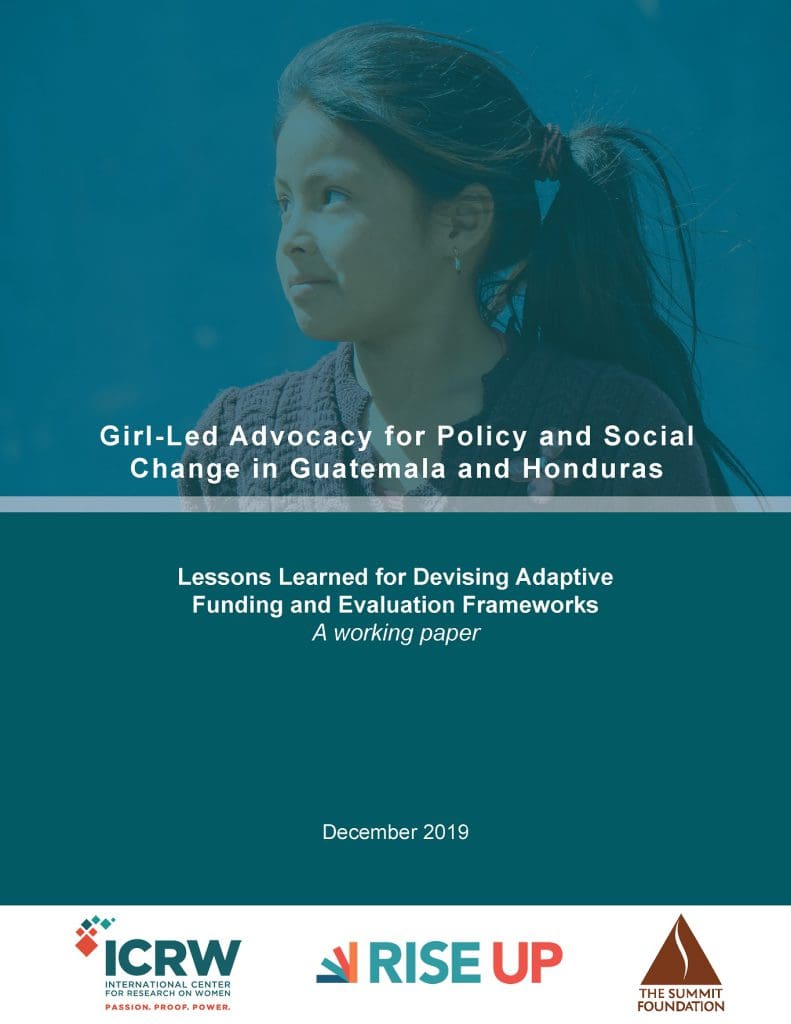
Girl-Led Advocacy for Policy & Social Change in Guatemala and Honduras
2019
 Extensive evidence demonstrates that investing in girls and young women is critical to creating a more just and equitable world. Research from the World Bank unequivocally demonstrates that empowering girls and young women is key to achieving many of the Sustainable Development Goals, reducing hunger and poverty, ending harmful practices such as female genital mutilation, drastically reducing maternal and neo-natal mortality, and fostering substantive and transformational gender equality (Klugman et al 2014). Never has it been morecritical to invest in adolescent girls, to support them to raise their voices and act as agents of change in their communities and in national and global arena.
Extensive evidence demonstrates that investing in girls and young women is critical to creating a more just and equitable world. Research from the World Bank unequivocally demonstrates that empowering girls and young women is key to achieving many of the Sustainable Development Goals, reducing hunger and poverty, ending harmful practices such as female genital mutilation, drastically reducing maternal and neo-natal mortality, and fostering substantive and transformational gender equality (Klugman et al 2014). Never has it been morecritical to invest in adolescent girls, to support them to raise their voices and act as agents of change in their communities and in national and global arena.
And yet, adolescent girls around the world most often remain invisible, silenced, and ignored. Their choices about marriage and education are frequently made for them by adults in their families and communities (Sen 1999). Their knowledge of their own reproductive health and sexuality is limited or enveloped in taboo and myth (Bearinger et al 2007; Hindin and Fatusi 2009; Morris and Rushwan 2015). Their freedom to earn and learn is highly circumscribed by social norms and traditional practices that define where they can go, what they can do, who they can talk to, and how they can act (Field et al 2018).
This article explores how programming that supports adolescent girls voice and agency can foster meaningful change in the lives of adolescent girls, their communities and even in the delivery of services and accountability of local and national duty-bearers in Guatemala and Honduras. The
article grew out of a program evaluation and a series of on-line and off-line conversations between donors, the organization that designed and supported the projects and the evaluators who sought to explore and document the outcomes. Beyond the evaluation, we found ourselves engaged in a deeper reflection about why this programming is pathbreaking and the challenges of documenting and evaluating the success of such programming.
The objective of this article is to delve more deeply into the paradigm shift that supported the programming achievements and to interrogate the measurements, log-frames and results-oriented metrics that are typically used to convey how donor funding is used and programming efforts are transformed into “outcomes.”
Gammage, S., O’Brien-Milne, L., Dunning, D., and Hall, K. (2019). Girl-led Advocacy for Policy and Social Change in Gutemala and Honduras: Lessons learned for devising adaptive funding and evaluation frameworks, a working paper. Washington, DC: International Center for Research on Women.
